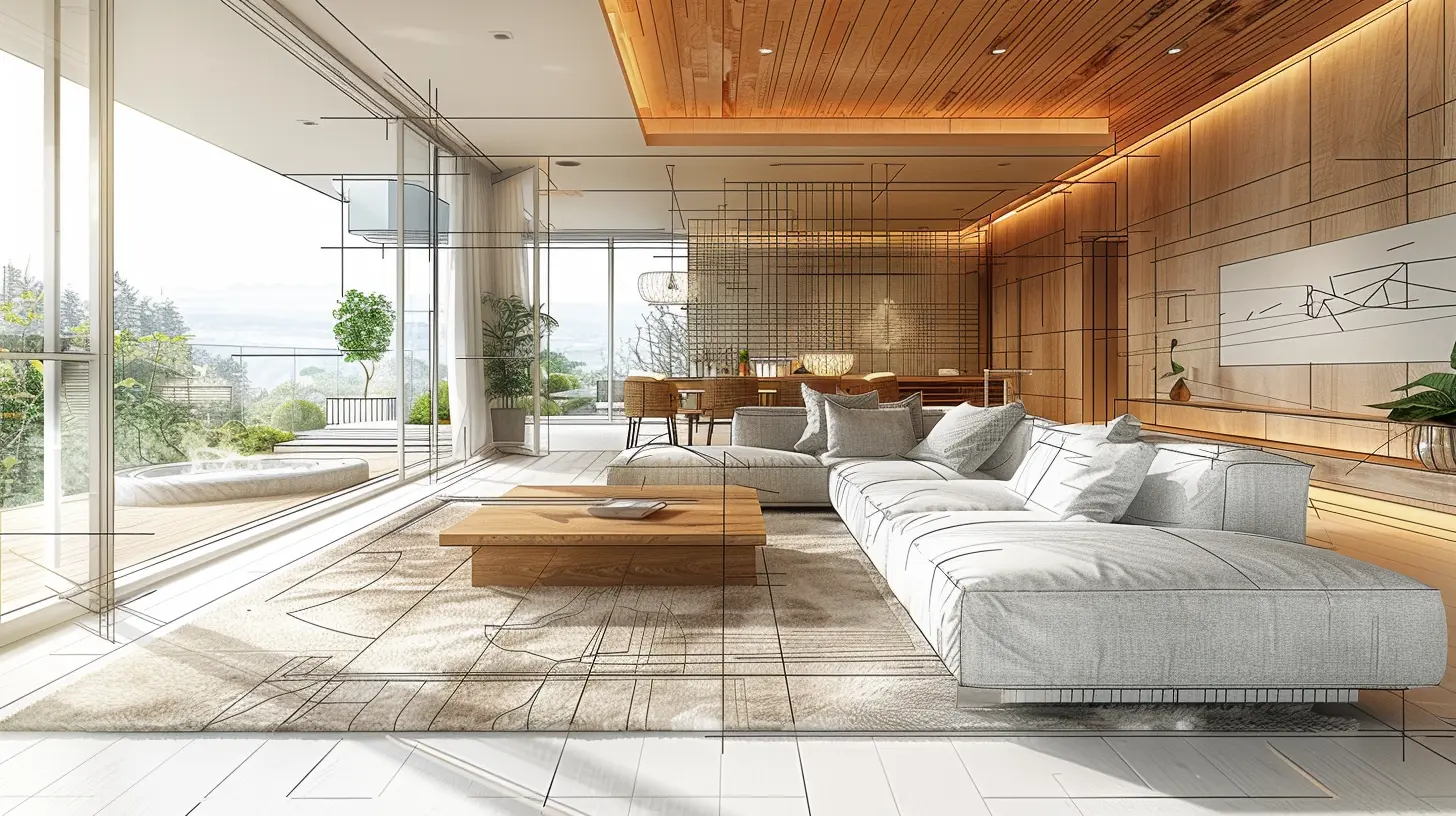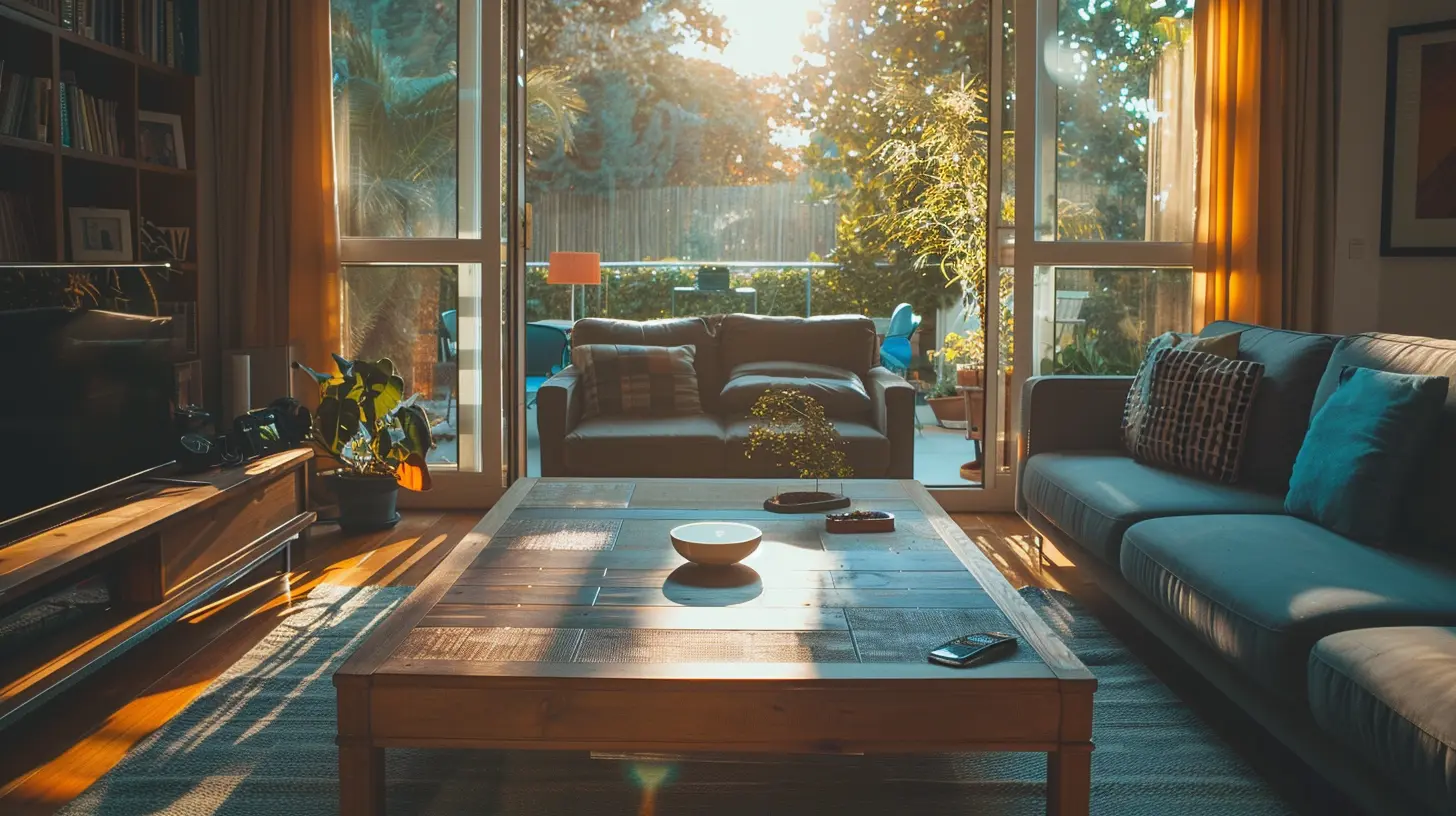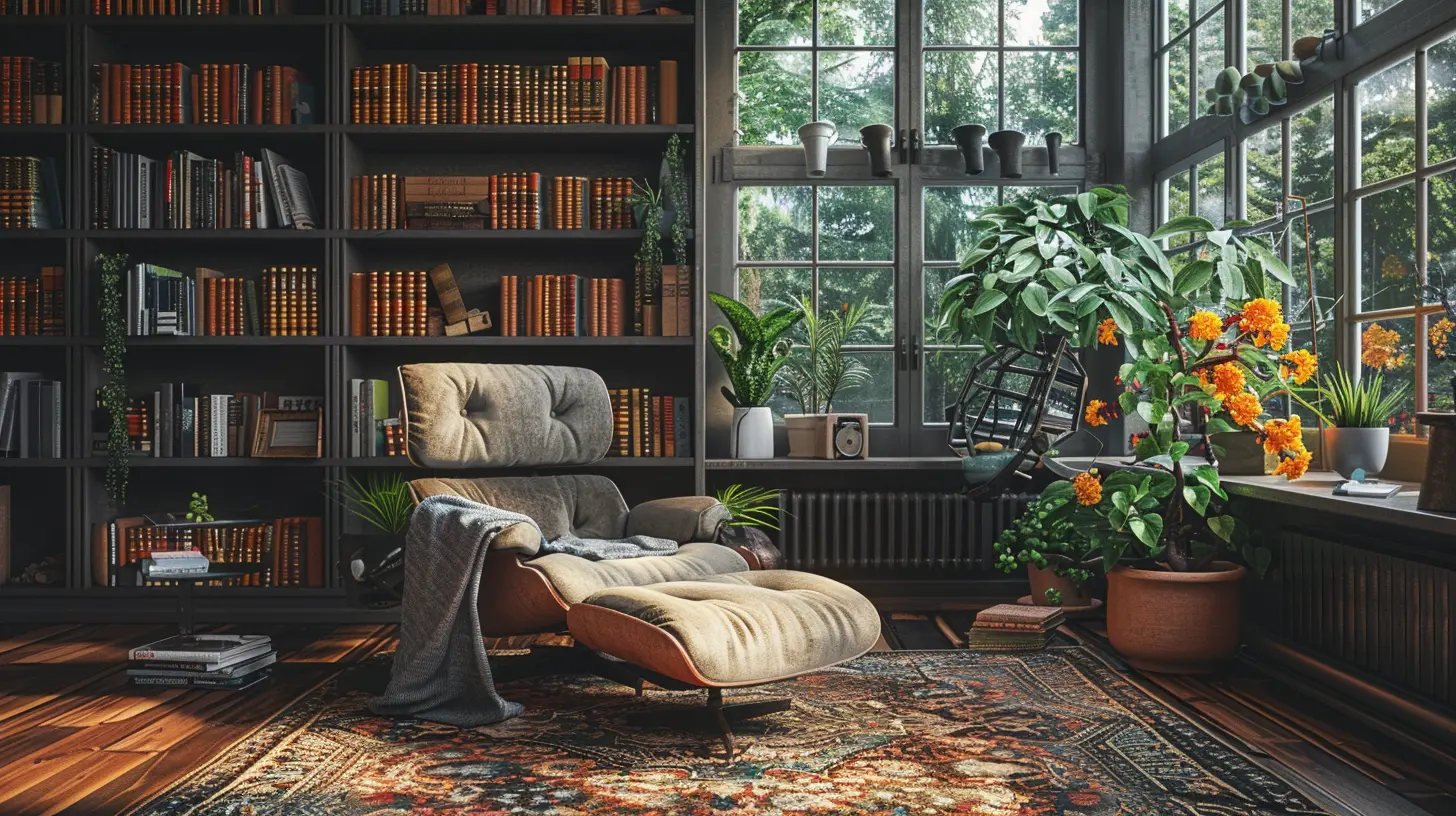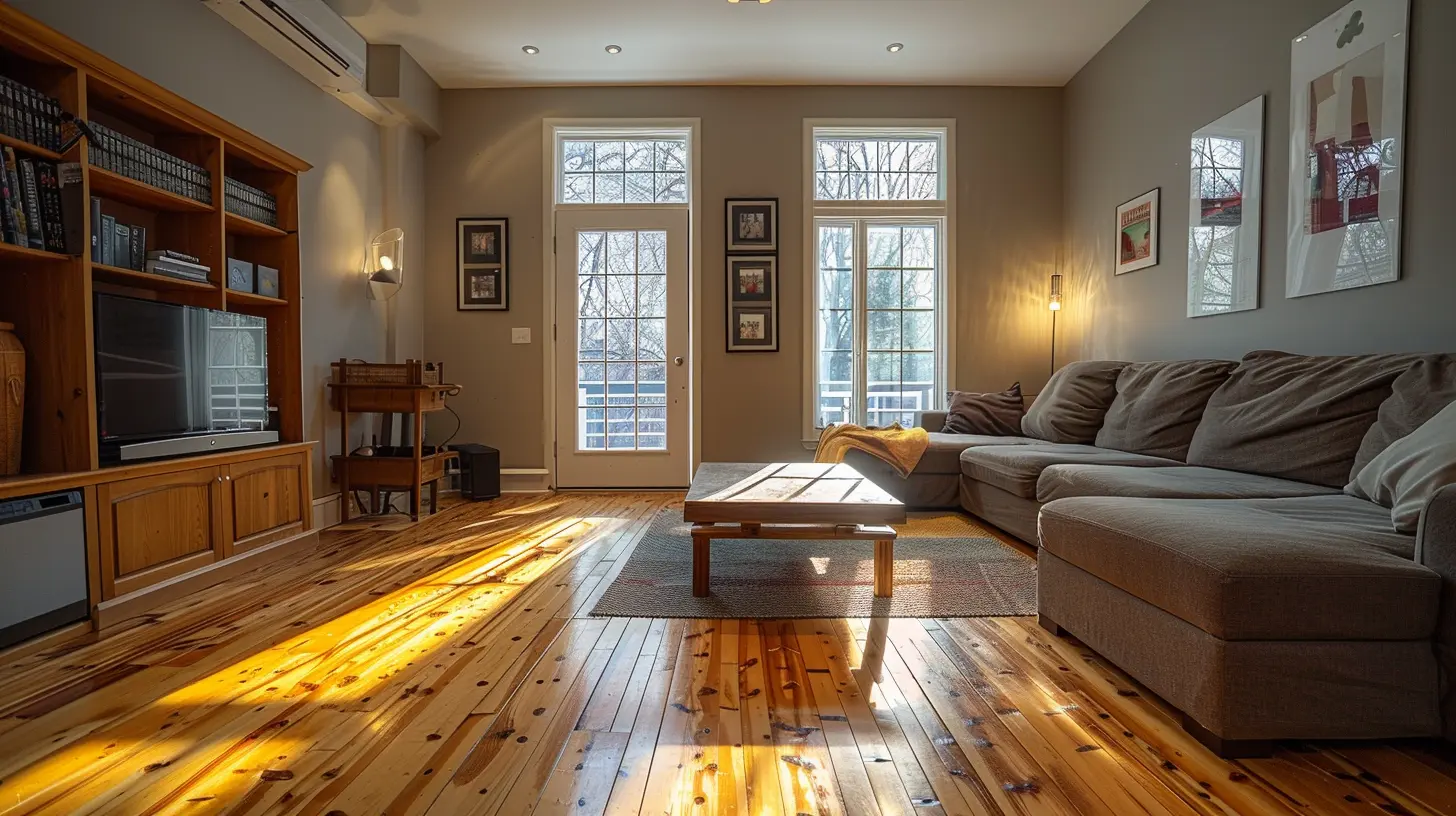How to Visualize Space While Touring a Home
14 August 2025
When you're house hunting, finding the perfect place can feel a bit overwhelming. You're walking through different homes, trying to imagine your life in each one. That’s where the power of visualization comes in. Being able to truly see a home's potential can make all the difference.
But how do you do it? How do you look past the current décor, furniture placement, or even small rooms that seem too cramped? Let's break it down step by step so you can confidently walk through any home and know if it’s the right fit for you. 
Why Visualization is Crucial
Buying a home isn’t just about square footage, the number of bedrooms, or the kitchen layout—it's about how the space feels. A home should support your lifestyle, whether you love to host dinner parties, need a quiet office space, or dream of a cozy reading nook.But not all homes present their full potential at first glance. Some might be cluttered, outdated, or staged in a way that doesn’t suit your taste. That’s why learning to visualize beyond what's in front of you is so important.
When you master the skill of visualization, you’ll be able to:
- See past cosmetic issues like paint colors or outdated fixtures.
- Imagine your own furniture and décor in the space.
- Recognize the true potential of each room.
- Make better buying decisions, avoiding regrets later. 
1. Look Beyond the Current Décor
Real estate agents and sellers often stage homes to appeal to a broad audience. This means you might walk into a home with trendy furniture, neutral color schemes, and perfectly arranged décor. But remember—those things won’t stay when you move in.On the flip side, some homes may feel cluttered or have outdated furniture, making them seem smaller or less appealing. Before you judge, ask yourself:
- What does the layout of the room actually look like?
- Would your furniture fit better in this space?
- How would the room feel with your own colors and style?
Imagine the walls freshly painted in your favorite shades, the furniture rearranged to suit your needs, and personal touches like photos or artwork bringing warmth to the space. 
2. Focus on Square Footage, Not What’s Inside
It’s easy to let big, bulky furniture or bad staging throw you off. But instead of focusing on what’s there, pay attention to the actual size of the rooms.Try this trick:
- Bring a measuring tape and compare a room’s dimensions to those of your current home.
- Take note of how much floor space is really available.
Some homes may feel cramped simply because of bad furniture placement, while others might seem spacious due to smart staging. Don’t be fooled—rely on numbers, not just your eyes! 
3. Imagine an Empty Room
One of the best ways to visualize a space is to mentally strip it down to the basics. Picture each room completely empty—no furniture, no decorations, no distractions.What do you see?
- Are there large windows that bring in natural light?
- How does the room flow into other spaces?
- Does it feel spacious or closed off?
By mentally removing everything inside, you’ll gain a clearer perspective on how the space can truly be used.
4. Think About Your Daily Routine
A home isn’t just a structure; it’s where your life happens. As you walk through, imagine your typical day unfolding in each space.- Can you see yourself waking up in this bedroom?
- Where would you drink your morning coffee?
- Could you easily cook meals in the kitchen?
- Is the layout functional for your family’s needs?
If a home doesn’t feel like it could smoothly fit into your daily routine, it may not be the right one for you.
5. Pay Attention to the Floor Plan
The layout of a home is one thing you can’t easily change. While cosmetic fixes like painting and updating light fixtures are simple, a choppy floor plan or awkward room placements can be deal-breakers.Ask yourself:
- Are the bedrooms too close or too far from each other?
- Is the kitchen open enough for entertaining?
- Is there enough storage to keep your home organized?
A great floor plan should flow naturally and work with your lifestyle. If it doesn’t, it may not be the best fit, no matter how beautiful the finishes are.
6. Use Augmented Reality or Floor Plan Apps
We live in a world where technology can help us make better decisions. If you're struggling to visualize a space, consider using apps that let you digitally place furniture in a room or view virtual layouts.Some useful tools include:
- RoomSketcher – Helps you create 3D models of a space.
- MagicPlan – Allows you to generate floor plans from photos.
- Houzz & IKEA Place – Let you add virtual furniture to a space to see how it fits.
Using tools like these can help you get an accurate sense of how your furnishings and décor would look.
7. Look Up, Down, and Around
When touring a home, don’t just look at the furniture—look at the actual structure. Small details can impact the way you perceive space.- Ceiling height – High ceilings can make a room feel bigger, even if the square footage is small.
- Windows and natural light – Dark rooms often feel smaller, so check for light sources.
- Flooring and walls – Light-colored floors and walls can open up a space, while darker tones can make it feel cozier.
Sometimes, tweaking small features—like changing dim lighting or repainting dark walls—can transform a home.
8. Take Photos and Videos
When you tour multiple homes, they can start blending together. Taking pictures and videos can help you compare spaces later and spot details you may have missed.- Snap photos of each room from multiple angles.
- Record a video as you walk through to review later.
- Take notes on how each space feels so you don’t forget!
This way, when you're making your final decision, you have a clear reference to revisit.
9. Picture the Changes You Can Make
Unless you're buying a newly built home, chances are the space may need some updates. Instead of getting hung up on small flaws, ask yourself:- Could a fresh coat of paint make a difference?
- Would updated lighting improve the space?
- Could a slight furniture adjustment change the room’s feel?
Most changes are simple and affordable, so don’t let minor details stop you from seeing a home’s full potential.
10. Trust Your Gut Feeling
At the end of the day, buying a home isn’t just about logic—it’s about how it feels. A house might check all the boxes, but if it doesn’t feel right, it may not be the one.As you walk through, listen to your instincts:
- Does this house feel like home?
- Can you picture yourself living here happily?
If the answer is yes, you might have just found your perfect space!
Conclusion
Visualizing space while touring a home is an essential skill that can help you make a smarter, more confident decision. By looking past the décor, focusing on dimensions, and imagining your personal touch, you can truly see a home's full potential.So, the next time you walk into a house, don’t just see what’s in front of you—see what it could be.
all images in this post were generated using AI tools
Category:
House HuntingAuthor:

Lydia Hodge
Discussion
rate this article
1 comments
Alexa Wolf
Visualizing space during a home tour is essential. Techniques like using dimensional references, imagining furniture placement, and considering natural light can greatly enhance decision-making. These strategies allow prospective buyers to better gauge a property's potential and functionality.
August 22, 2025 at 2:34 AM

Lydia Hodge
Thank you for your insightful comment! You're absolutely right—these visualization techniques are key to helping buyers envision a home's potential.


